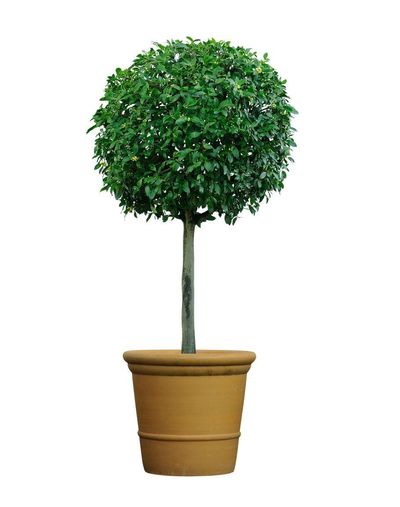What are Standard Plants?
While perusing nursery catalogs you may come across the term “standard.” What does this mean? It means you are in for a real treat, both in ease of care and in eye-catching beauty. Standards may be needled evergreens, deciduous fruiting, or even flowering perennials. It takes time to create a standard, so for the do-it-yourselfer, patience is a virtue. Many enthusiasts have fun names for standards such as ball on a stick or lollipop. This gives a visual cue to a standard plant’s appearance. The term comes from the Old English “standan,” meaning “to stand.” Standard plant features include a single stem, sometimes woody, but if not, a supported main trunk of some sort. It may be a twined stem such as in the case of a standard wisteria, which is made by winding the vines around themselves to support a leafy canopy. The process starts when the plant is young and there are three main ways in which to develop a standard form.
What Makes a Standard Plant?
It is the supported leaf and flower portion of a plant that designates it as a standard. Plants that accommodate the form might include:
Camellia Holly Dwarf magnolia Dwarf fruit Miniature ficus Azalea Photinia Sweet bay
The key is selection of a young plant that still retains flexibility in the stem. Training consists of removing any competitive stems and pruning to achieve the shape. You can start with a seedling, a cutting, or an established container plant. During training it is important to keep the stem or trunk straight and true for best appearance. Training a plant yourself is much more economical than purchasing one already developed. It is not hard, but does require some time and attention to the growing standard.
How to Make a Standard Plant
The quickest establishment is through the use of a mature plant, but it takes more time to develop the stem. In this case, lop off any peripheral stems and stake the main trunk. Pinch off any shoots on the stem and only allow side shoots on the top of the stem to form a canopy. Depending on the plant, you can create a ball, cone or arching canopy. Another way to start a standard is with a rooted cutting. When the cutting is at least 10 inches (25 cm.) tall, begin training it to one central leading stem. In the second year, start to form the canopy. The final method to make a standard plant is with a seedling. This will really take some patience as the plant comes into maturity, but you can start even when the plant is young. Pinch off side shoots and stake the young stem. This is when you can also develop several stems to twine into a unified trunk. Keep standards potted while training for ease of care because in-ground plants are more likely to send up competitive shoots that will ruin all that careful work.
